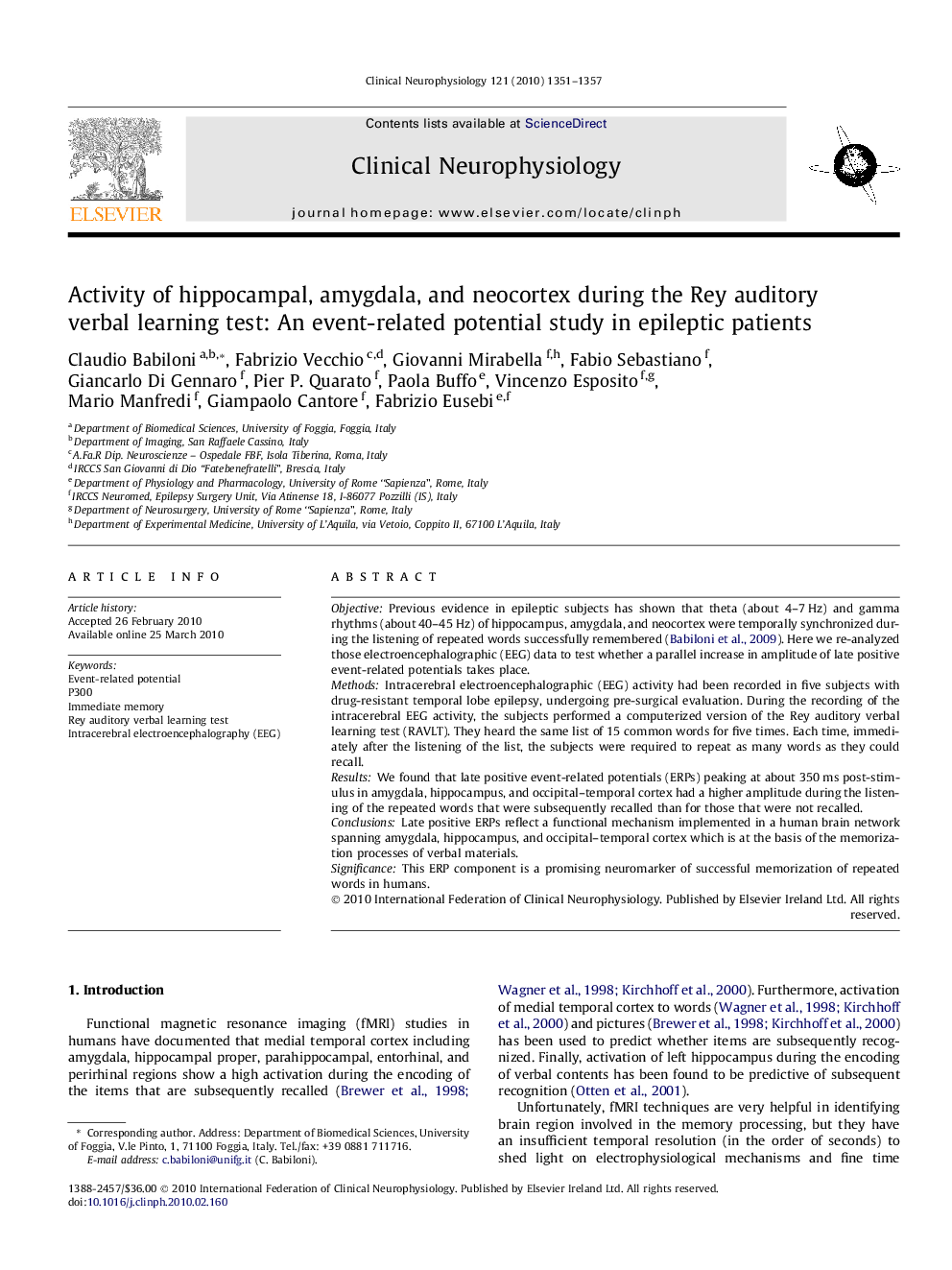| Article ID | Journal | Published Year | Pages | File Type |
|---|---|---|---|---|
| 3044859 | Clinical Neurophysiology | 2010 | 7 Pages |
ObjectivePrevious evidence in epileptic subjects has shown that theta (about 4–7 Hz) and gamma rhythms (about 40–45 Hz) of hippocampus, amygdala, and neocortex were temporally synchronized during the listening of repeated words successfully remembered (Babiloni et al., 2009). Here we re-analyzed those electroencephalographic (EEG) data to test whether a parallel increase in amplitude of late positive event-related potentials takes place.MethodsIntracerebral electroencephalographic (EEG) activity had been recorded in five subjects with drug-resistant temporal lobe epilepsy, undergoing pre-surgical evaluation. During the recording of the intracerebral EEG activity, the subjects performed a computerized version of the Rey auditory verbal learning test (RAVLT). They heard the same list of 15 common words for five times. Each time, immediately after the listening of the list, the subjects were required to repeat as many words as they could recall.ResultsWe found that late positive event-related potentials (ERPs) peaking at about 350 ms post-stimulus in amygdala, hippocampus, and occipital–temporal cortex had a higher amplitude during the listening of the repeated words that were subsequently recalled than for those that were not recalled.ConclusionsLate positive ERPs reflect a functional mechanism implemented in a human brain network spanning amygdala, hippocampus, and occipital–temporal cortex which is at the basis of the memorization processes of verbal materials.SignificanceThis ERP component is a promising neuromarker of successful memorization of repeated words in humans.
